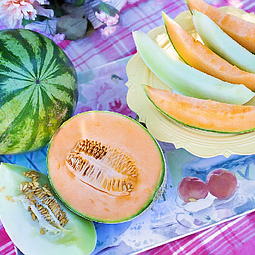Loading the Dishwasher
February 20, 2017 at 6:00 a.m.
Loading the Dishwasher
I hated washing dishes with my Grandma Gladys. She was always handing things back with a grimace, saying, “Do you call this clean?” Of course I called it clean. I had rinsed it and put it in the drain rack hadn’t I? I thought that once I had my own genuine electric dishwasher all the criticism and pickiness would be behind me. Unfortunately, not so.
How hard can it be to load a dishwasher? Put the dishes in, add some soap, turn it on and go do other stuff. Turns out, it isn’t all that easy. You start with the plates and saucers. Stand them up in the bottom so the water can shoot up through them or fall down on them depending on what sort of dishwasher you have. Put the cups glasses and bowls in the top so the water can squirt on the eating surfaces from below. Also put the things that might melt on the top rack as far as possible from the heating element. All just common sense, Right?
What about pans? Little pans can go on top, but big pans will block the flow of water if you put them on the bottom. According to experts in the field*, they should be hand washed and stacked on towels next to the sink.
Now comes the big controversy. Utensils. Handles up or down? My daughter insists it should be handles up. That way a toddler can’t fall and impale him or herself on exposed knives and forks. Also, you pick them up (the utensils—not the toddlers) to put them away by their handles, thus keeping the tines, spoons and knife points sterile, uncontaminated and ready for use. Experts say put the utensils in handles down so that the soapy water can better circulate around the business end of the utensils.
It is important to consider whether utensils should be grouped or mixed. If spoons or forks are loaded together, they tend to nest. This reduces the water flow over the whole surface and so mixing is recommended. It might take a few more seconds to sort when unloading, but the surface exposure is far superior.
I generally prefer the “go with the flow” method and abide by the rules of the house. Handles up at my daughter’s house and down at our house. Mixing utensils is recommended unless it is expressly forbidden by local custom. Usually, when visiting elsewhere, I wait until someone puts utensils in the washer and then follow their example.
So, modern devices didn’t necessarily make things all that much easier after all. But now I hope I would have the courage to tell Grandma Gladys, “Yes, I call that clean.”
*My husband.
My husband, again
Edythe Stromme and her husband Charles worked and lived in California, Oregon, Washington, and Alaska. They are now retired and living in Cottage Grove, Oregon. Edythe belongs to writing groups in Oregon and Washington and credits her writing sisters with keeping her sane and writing. She is currently working on a novel and her memoir.
SHARING STORIES is a weekly column for and about the 50 plus crowd living in the Puget Sound region. Send your stories and photos to ariele@comcast.net. Tell local or personal stories; discuss concerns around aging and other issues; share solutions, good luck, and reasons to celebrate; poems are fine too. Pieces may be edited or excerpted. We reserve the right to select among pieces. Photos are always a plus and a one-sentence bio is requested (where you live, maybe age or career, retired status, etc.).
SHARING STORIES is featured on www.northwestprimetime.com, the website for Northwest Prime Time, a monthly publication for baby boomers, seniors, retirees, and those contemplating retirement. The newspaper can be found in the greater Seattle area and other Puget Sound locations. For more information, call 206-824-8600 or visit www.northwestprimetime.com. To find other SHARING STORIES articles on this website type "sharing stories" in the search function above.





